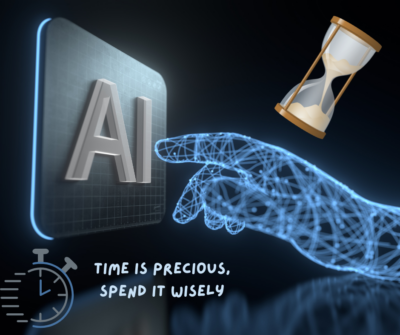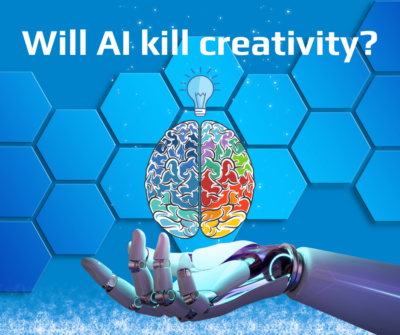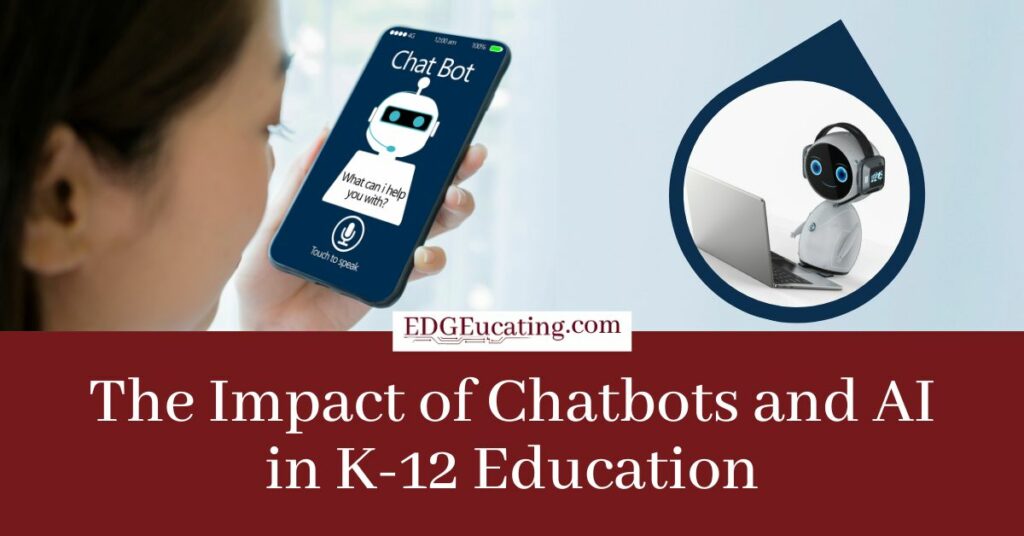Segments about… Chatbots and artificial intelligence have been popping up in the news a lot lately, and it’s easy to see why. University education major students are being presented with specific questions about how they will use technology in their classrooms. They are also requiring that students discuss how they can integrate technology into their teaching practices. This perfectly illustrates what it means to be a teacher today, along with a clarification of the role that technology plays in education.
As a teacher, I have seen first-hand the impact that artificial intelligence (AI) and chatbots are having on K-12 education. While these technologies offer a wide range of benefits and opportunities for teachers and students alike, it is important to understand both the educational threats they pose and the strategies that can help us use them to their fullest potential.
AI technology is becoming more and more advanced, and with that, comes the potential to revolutionize the way we approach teaching and learning in K-12 classrooms. In fact, some experts are predicting that AI will have an even greater impact on education than smartphones did. So what does that mean for teachers? How can they prepare?
In this blog post, we will investigate what some of these changes are and give you some ideas about how to prepare yourself for them, and recommend ideas for utilizing them in your classroom and daily job.
Educational Benefits of AI and Chatbots
One of the most exciting educational benefits of utilizing AI and chatbots in education is their ability to really personalize learning. With chatbots, teachers can provide students with instant feedback, answer questions, and even administer assessments. This can help to engage students and make learning more interactive, while also freeing up teachers to focus on other aspects of their job. This type of learning has already been implemented in some schools; for example, AI algorithms can analyze student performance data, providing teachers with insights into areas where a student may need additional support. This information can then be used to create personalized learning plans that target specific areas of weakness. Additionally, chatbots can provide students with one-on-one support, answering questions and helping them navigate the learning process.
Harvard University’s EdCast series, features interviews with educators about how AI will impact learning. One episode features an interview with Google’s Jeff Dean, who explains how AI can help teachers manage their workloads by analyzing student data and generating reports pinpointing where students need help most often. This leads us to the teacher’s time-saving aspects of AI.
How AI Makes Teaching Easier

AI and chatbots in the classroom can help teachers and administrators save time and resources. For example, chatbots can be used to grade assignments and provide feedback, freeing up teachers to focus on other important tasks. Additionally, AI algorithms can analyze student performance data to identify trends and patterns that can help both teachers and administrators make informed decisions about the best course of action for their students.
Chatbots can also help teachers with ideas for lesson/unit planning by offering ideas for projects and associated unit activities. For instance, if you are planning a unit on Biodiversity, it might provide a hands-on activity to foster collaboration, or perhaps cover the design thinking process. Eventually, teachers will likely be able to provide chatbots with specific information such as the time frame for teaching a lesson/unit, the age of students, and other key details and it provide them with a tailored plan to meet these requests. It is already very close to achieving this level of outcome.
AI Provides Students With Access to Information
Another benefit of chatbots and AI in education is the ability to provide students with access to a wealth of information. With access to the internet and AI-powered tools such as Zumi and pi-top, students can find the answers to their questions, explore new subjects, and develop their critical thinking and social-emotional skills. This can help to expand their knowledge and understanding and to prepare them for the challenges they will face in the future.
Concerns Regarding AI in Education
However, there are also a number of educational threats posed by chatbots and AI in K-12 education. One of the main concerns is the potential for students to become overly reliant on these technologies, leading to a reduction in critical thinking and creativity. Additionally, there is a risk that students may be exposed to misinformation or biased information, leading to misunderstandings and false beliefs.
Another concern is the impact that chatbots and AI may have on student privacy. With the increasing use of AI in education, there is a growing need to protect student data and ensure that their privacy is not compromised.
Successful AI Integration

To successfully integrate these into the classroom, it is important for educators to have a clear understanding of the benefits and challenges these technologies present. They must also be proactive in addressing the risks and limitations of AI and chatbots, and work to ensure that they are being used in an ethical and responsible manner.
One effective strategy for incorporating AI and chatbots in the classroom is to use them as tools, rather than as the sole source of information or support. For example, teachers can use chatbots to provide students with information and support but also encourage them to use their own critical thinking skills and creativity to solve problems. Additionally, teachers can encourage students to reflect on their own learning process and to think critically about the information they are receiving.
Another strategy for teaching with AI and chatbots is to be transparent about their use. Teachers should educate students about the potential risks and limitations of AI and chatbots, and help them to understand how they can use these technologies in a responsible and ethical manner. Additionally, teachers should be open about how they are using AI algorithms to analyze student data and make decisions about student learning.
The use of chatbots and AI in education represents an opportunity to provide students with greater access to information, as well as the ability to engage in valuable conversations with technology. However, educators must consider a number of factors when deciding whether or not to adopt these tools in their classrooms.
Foster Creativity
Teachers should also encourage students to use chatbots and AI in creative ways and to think outside the box. By doing so, students will be more likely to develop the skills they need to become innovative and creative thinkers.
Encourage Critical Thinking
Teachers should encourage students to question the information they find and to think critically about the sources of that information. By doing so, students will be less likely to simply accept information at face value, and more likely to engage in independent learning and discovery.
Foster Collaboration
Teachers should encourage students to work together and collaborate with each other. Students should be encouraged to work collaboratively with their peers whenever possible because this will help them develop critical thinking skills, leadership skills, problem-solving skills, teamwork skills, communication skills, decision-making skills, creativity skills, and collaboration skills (e.g., working together as a team).
Balance Technology Use
Teachers should balance the use of chatbots and AI in the classroom with hands-on activities, projects, and real-world experiences. By doing so, students will be more likely to understand the value and limitations of technology and to develop the skills they need to succeed in the real world.
Ensure Student Privacy
Teachers and educational organizations should work to protect student privacy and to ensure that student data is not misused. This may involve implementing strict data privacy policies and working with chatbots and AI providers to ensure that student data is kept secure.
AI has the Potential to Revolutionize Learning
In conclusion, the use of chatbots and AI in K-12 education has the potential to revolutionize the way that learning is delivered, but it is important to consider both the benefits and the risks. By taking a thoughtful and strategic approach, teachers and educational organizations can help to ensure that these technologies are used to their fullest potential and that students are prepared for the challenges they will face in the future.



